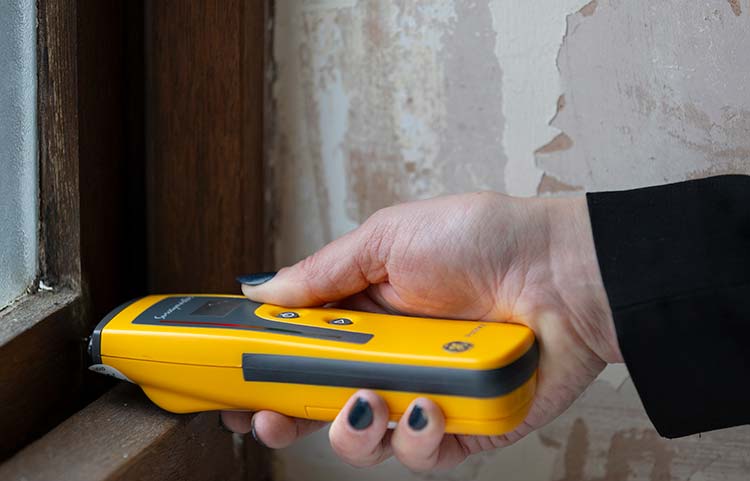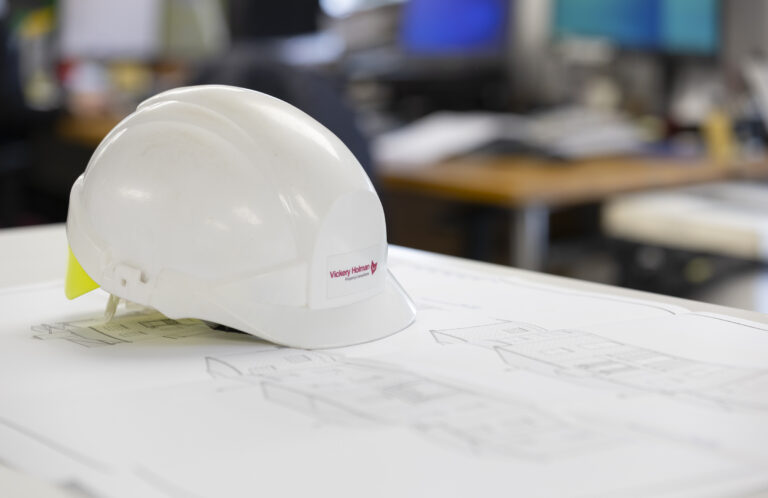Dilapidations
Let our Specialists help you navigate the minefield of Dilapidations. Whether Landlord or Tenant, we can help you reach the best outcomes.
Dilapidations services for the South West
Navigating dilapidations can be tricky for both landlords and tenants, and we are here to provide a one-stop shop for efficiently directing the process.
Our Building Surveying team work closely with our Lease Advisory and Valuation teams undertaking Section 18(1) valuations, to ensure that clients can go through the process as straightforwardly as possible in accordance with the Dilapidations Pre-Action Protocol.
We offer comprehensive dilapidations services, including dilapidations liability assessments, inspections and claim preparation, and negotiations on behalf of both landlords and tenants. Our experts help landlords and tenants understand their lease obligations to avoid disputes at the end of the lease and, where the lease has ended reach a fair settlement for any outstanding work.

Schedules of Conditions
A typical way of protecting a tenant’s liability at the commencement of a lease is to have a schedule of condition annexed to the lease with stipulation that the tenant does not have to return the property in any better condition than evidenced in the schedule. Unfortunately, that does not always provide the protection a tenant believes it does. Whilst a schedule of condition may show an element of the building in disrepair, if this becomes worse and the only means of repair is replacement, the tenant is liable for the replacement at full cost.
Schedules of condition vary greatly in quality. Lots of schedules are purely photographic and it is not possible to fully examine the detail of damage within photographs.
If the schedule of condition does not show evidence of the defect seen at the end of the lease it is presumed that the property was in repair. A number of schedules do not include roofs or gutters or other difficult to access areas but if repairs are needed at the end of the lease, the repairs required will not be limited by the schedule of condition undertaken.
When planning alterations, a tenant should be aware of the implications of making good and reinstating the premises at the end of the lease. A tenant often thinks that their alterations and adaptations are an improvement to the property and the landlord will benefit from such improvement. An improvement/betterment for one person is not always of any merit to other and can be a hindrance to another tenant; for example a mezzanine whilst increasing net floor area and is useful for occupiers with a large office/storage of small items, it is a detriment to users wishing to store larger items or have free space for manufacture.
Reinstatement and Repairs
When a tenant is considering vacating, they should carefully plan their exit strategy to allow sufficient time to undertake repairs to return the property in compliance and remove and make good any alterations.
If they do not undertake work they are at risk of the landlord instigating the repairs and reinstatement and claiming their costs (and potentially loss of rent). In not undertaking reinstatement and repairs the tenant gives up control not only of the cost, but the quality of work being undertaken.
Landlords tend to have the schedule of dilapidations costed either by a professional or contractor and seek from the tenant financial compensation for the cost of the works. There is a limitation on the financial recompense the landlord can achieve, this being the overall loss that it suffers.
Fulfilling Lease Obligations
A tenant is required to fulfil its lease obligations and leave the property in repair at the end of the lease. Often tenants are spending significant sums in fulfilling this requirement, in some instances, particularly on old properties and industrial units, replacing windows and other elements of the property. In undertaking this work at the end of the lease the tenant does not derive any benefit from the expenditure. There are many items which the tenant could undertake during the lease and derive some benefit from the expenditure, for example older industrial units, particularly with asbestos cement or single skin roofs may be in such disrepair that the only repair is replacement of the roof. Should this be the case, the tenant is potentially liable for the full replacement of a roof, which depending on the extent of the roof being replaced may mean a previously uninsulated roof may be required to be insulated. Undertaking the work during the lease would have provided the additional benefit of an insulated premises with reduced heating costs and potentially the avoidance of the ongoing costs of ad hoc repair during the period of the lease to a roof that is in poor condition.
Reducing a Tenant’s Dilapidations
Dilapidations is a complex subject with a mixture of technical and strategic advice required. As indicated, the route to reducing a tenant’s dilapidations is to consider their intentions in using the property prior to entering into a lease and making an assessment of their liabilities relating to the repair and condition of the property and their intended use, alteration and adaptation of it. During the lease it may be beneficial for a tenant to undertake certain repairs and gain the benefit from the capital expenditure and towards the end of the lease be clear on their best exit strategy both in terms of their intended relocation and the landlord’s intention.
When exiting a building the tenant often is moving to an alternative premises and must consider the costs of occupying two buildings simultaneously if they wish to undertake repairs to the property they are leaving.
A landlord needs to be aware of the implications of not undertaking repair at the end of a lease and that incoming tenants may require a schedule of condition to be annexed to the lease to limit their liabilities. The landlord should also be aware that they may not recover the full cost of repairs, particularly if they do not undertake the repairs at the end of the lease should a tenant claim the loss to the landlord’s reversion is less than the repairing costs.
Dilapidations FAQs
What are 'dilapidations'?
Dilapidations relates to a commercial property that has been let to a tenant and refers to the condition both during and after the period of the tenancy. Lease agreements stipulate the level of repair or maintenance that is required from a tenant during, or on completion, of a tenancy, and the parts of the property that are the responsibility of the tenant. Dilapidations relate to any breaches of the obligations of the tenant, including to repair, redecorate or reinstate elements of the property. Landlords and tenants can disagree on the levels of work required and it is worthwhile getting expert advice from a building surveyor before entering into a lease, as well as during or at the lease end, as costs can be significant for both landlord and tenant.
What dilapidations is a landlord responsible for?
A “full repairing and insuring” lease will require the tenant to be responsible for the whole of a commercial property, while an “internal repairing and insuring” lease will leave the responsibility for the external building fabric (walls, roofs, soft and hard landscaping etc.) with the landlord.
As the end of a tenancy approaches, it is recommended that landlords appoint a RICS accredited building surveyor to carry out a dilapidations survey, and to present the tenant with a Schedule of Dilapidations in advance of the lease ending. The intended use of the property may affect the extent of work that a tenant may be required to undertake. If a financial settlement is to be agreed, the money to be paid by the tenant for repair work might be limited to the loss in value to the property. If the landlord chooses to undertake dilapidations work at the end of the lease, they can reclaim the cost of doing so from the tenant.
Landlords usually want a property ready to go back on the market as fast as possible, so agreeing the work in advance is sensible. There is the possibility, in some leases, for a landlord to undertake work on behalf of the tenant prior to the lease end and recover this money via the lease. Careful assessment of the options available to a Landlord in advance of the lease end is advised.
What is a landlord responsible for in a commercial lease?
In most commercial leases the terms seek to limit the landlord’s day to day responsibilities as much as possible. The onus is placed on the tenant to repair and look after the property and comply with any restrictions that have been agreed. There are exceptions such as multi occupational buildings where the only practical option is for the landlord to take responsibility and recover the cost by a service charge. It all depends on the exact terms of the contract that specialist advice can clarify.
How do I make sure a break clause works properly?
Break clauses have become more common in recent years mainly to give tenant’s flexibility in uncertain and rapidly changing economic times. They can be a useful method to trigger a restructure of the lease. There are dangers as time limits and conditions must be strictly complied with for the break to be valid. There may be a financial penalty to pay. It is important to use specialist advice to know when and how to serve the break notice so your break option can benefit you.
What is a Schedule of Dilapidations?
A Schedule of Dilapidations is a detailed list of items that a landlord claims require repair, decoration or reinstatement in a commercial property. This schedule reflects the tenant’s obligations as outlined in the lease agreement, such as repairing, maintaining, or reinstating specific features of the property.
When is a Schedule of Dilapidations issued?
Typically, a Schedule of Dilapidations is issued towards the end of a lease term, often within the last year or after the tenant has vacated the property. It can also be issued during the lease term, in combination with a repair notice, if significant breaches are identified.
Who prepares the Schedule of Dilapidations?
A Schedule of Dilapidations is generally prepared by a building surveyor or another qualified professional, on behalf of the landlord. The surveyor inspects the property to assess its condition and determine if the tenant has met their obligations under the lease.
What are the types of Schedules of Dilapidations?
There are two main types of Schedules of Dilapidations:
- Interim Schedule: Issued during the lease term to address immediate breaches or maintenance issues.
- Terminal Schedule: Issued near the end of the lease term, to outline what needs to be repaired before the lease expires, or issued after the lease has ended, detailing the work required to restore the property to its original condition.
What should tenants do if they receive a Schedule of Dilapidations?
If you receive a Schedule of Dilapidations, consult with a legal advisor or a chartered surveyor experienced in dilapidations. They can help you understand the claims, negotiate with the landlord, and determine your rights and obligations under the lease.
Can a Schedule of Dilapidations be negotiated?
Yes, a Schedule of Dilapidations can often be negotiated. Disputes can arise over the scope of work required or the cost estimates. Negotiation might lead to a settlement or a compromise on the repairs or financial compensation.
How can tenants avoid dilapidation claims?
To minimise dilapidation claims, tenants should:
- Maintain the property as per the lease agreement.
- Conduct regular inspections to identify and address potential issues early.
- Keep thorough records of maintenance and repairs during the lease term.
- Consider obtaining a Schedule of Condition at lease start to establish the property’s initial condition.
What happens if a tenant ignores a Schedule of Dilapidations?
Ignoring a Schedule of Dilapidations can lead to legal action, additional costs, or further disputes. It is essential to address the claims and negotiate with the landlord or their representatives to avoid further complications.





